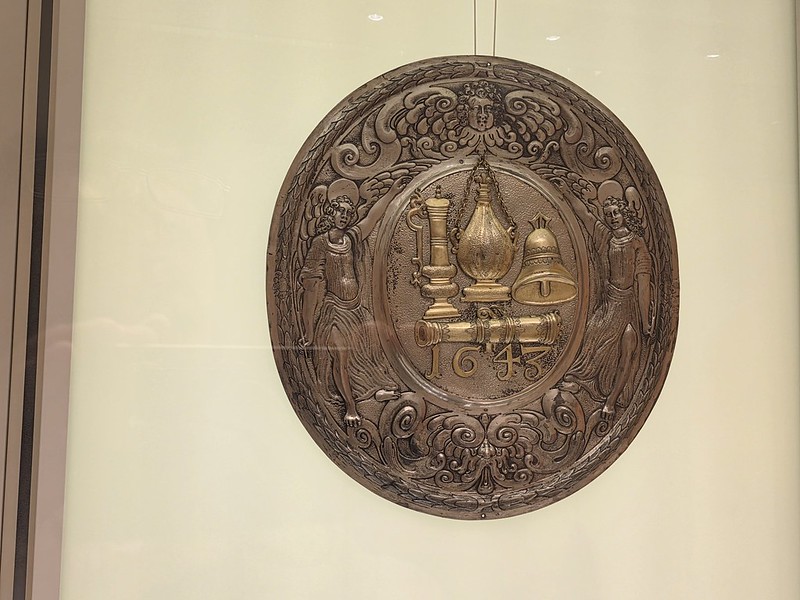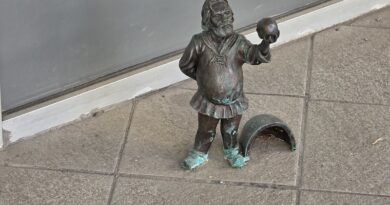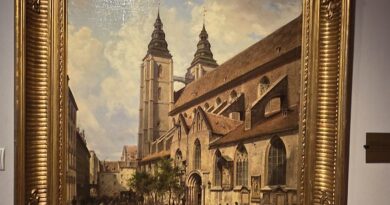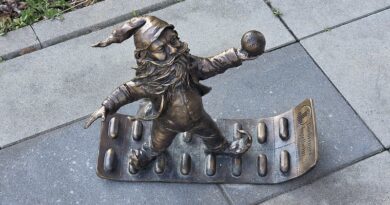Wrocław – National Museum in Wrocław (Funerary Shield)
The English translation at the National Museum in Wrocław of this item reads “funerary guildshield”, but that’s not a phrase that is used anywhere on-line, but it seems that “funerary shields” are a thing. However, an Internet search mainly brings up this museum and some on-line games, which suggests that this museum has a strong collection of them. The museum explains on their web-site:
“The custom of decorating coffins during funeral ceremonies with valuable, often silver, coffin shields (escutcheons) displaying the coat of arms of the corporation the deceased was a member of, was adopted in the 16th cent. by corporations of professions – guilds. The shields were not nailed to coffins but only attached to them (fixed with string), and after the funeral they were put away (protected by special cases) to await the next such ceremony.”
This all means that the museum’s English translations are spot-on, it’s just that I’ve never heard of this concept before. After meandering around on-line, something I’m prone to do, it seems that this was something done by the middle classes in mostly Germanic lands. This one is dated 1643 and relates to the brassfounders, bellfounders and pewterers guild. Back in 1643, the city was part of the Hapsburg Empire and the city name would have been Breslau. The shield was made by George Nitsch, who was a craftsman living in Wrocław who specialised in metalwork and it’s crafted using repoussé and chasing techniques, which involve hammering and shaping the metal from the reverse side (repoussé) and then refining the details from the front (chasing). I’d add that I didn’t know about these metalwork terms, but that’s what happens when you faff about on-line when intrigued by things. On the shield there is imagery of a bell, a candle and some, er, metal piping along with the rather cherub like religious symbolism around the outside.
The period between 1618 and 1648 really wasn’t a good one for Wrocław as Holy Roman Empire and Swedish troops keep battling their way around the city breaking things and arguing with their swords, with nearly half the city’s 40,000 residents dying of plague. Indeed, there’s a real chance that this shield was taken to a member of the guild who had died of the plague, something which adds a rather solemn note to proceedings.
Anyway, I’ve rather digressed, but I liked this exhibit as it’s a new genre of things I’ve discovered that I know nothing about.





